Family
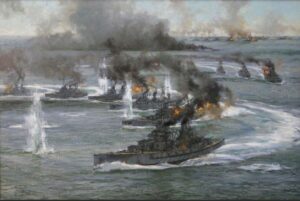 In the Battle of Trafalgar, on October 21, 1805, the British Royal Navy took on the combined fleets of the French and Spanish Navies during the War of the Third Coalition (August–December 1805) of the Napoleonic Wars (1803–1815), and soundly defeated them. As the French and Spanish Navies came into sight, Admiral Horatio Nelson raised one set of signal flags. His orders were simple and direct, “England expects every man to do his duty.” His men knew exactly what he meant and what was expected of them…fight, and if necessary, die for their country!! Without hesitation, Nelson’s ships closed in on and destroyed their enemy. The victory of this battle has been called the greatest naval victory in history, and for the remainder of the century, the British really had control over the oceans and the world. In the years following that victory, the British grew lackadaisical about keeping a strong military force, and 111 years later, that issue would be evident for the British Royal Navy when they went up against the Germans in the Battle of Jutland.
In the Battle of Trafalgar, on October 21, 1805, the British Royal Navy took on the combined fleets of the French and Spanish Navies during the War of the Third Coalition (August–December 1805) of the Napoleonic Wars (1803–1815), and soundly defeated them. As the French and Spanish Navies came into sight, Admiral Horatio Nelson raised one set of signal flags. His orders were simple and direct, “England expects every man to do his duty.” His men knew exactly what he meant and what was expected of them…fight, and if necessary, die for their country!! Without hesitation, Nelson’s ships closed in on and destroyed their enemy. The victory of this battle has been called the greatest naval victory in history, and for the remainder of the century, the British really had control over the oceans and the world. In the years following that victory, the British grew lackadaisical about keeping a strong military force, and 111 years later, that issue would be evident for the British Royal Navy when they went up against the Germans in the Battle of Jutland.
Apparently not understanding that things were no longer what they used to be, a British naval force commanded by Vice Admiral David Beatty confronted a squadron of German ships, led by Admiral Franz von Hipper, approximately 75 miles off the Danish coast, just before 4:00 on the afternoon of May 31, 1916. In what was later called the greatest naval battle of World War I, the two squadrons opened fire on each other simultaneously, beginning the opening phase of the Battle of Jutland.
Following the Battle of Dogger Bank in January 1915, the German navy knew that they were, at the very least, numerically inferior to the British Royal Navy, so the Germans chose not to engage them in a major battle for more than a year. During that time, they began pursuing a new strategy for their naval warfare…namely, its lethal U-boat submarines. Biding his time, Vice Admiral Reinhard Scheer waited until May 1916, when the majority of the British Grand Fleet was anchored far away, at Scapa Flow, off the northern coast of Scotland. Then Sheer, the commander of the German High Seas Fleet, believed the time was right to resume attacks on the British coastline. The unique coding system of the U-boats made it very difficult for the British to know what was coming. Scheer ordered 19 U-boat submarines to position themselves for a raid on the North Sea coastal city of Sunderland while using air reconnaissance crafts to keep an eye on the British fleet’s movement 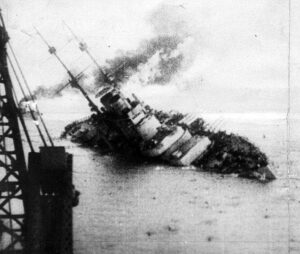 from Scapa Flow. The first planned raid was scrapped because of bad weather, and Scheer instead ordering his fleet, consisting of 24 battleships, five battle cruisers, 11 light cruisers, and 63 destroyers, to head north, to the Skagerrak, a waterway located between Norway and northern Denmark, off the Jutland Peninsula, where they could attack Allied shipping interests…hoping to punch a hole in the stringent British blockade.
from Scapa Flow. The first planned raid was scrapped because of bad weather, and Scheer instead ordering his fleet, consisting of 24 battleships, five battle cruisers, 11 light cruisers, and 63 destroyers, to head north, to the Skagerrak, a waterway located between Norway and northern Denmark, off the Jutland Peninsula, where they could attack Allied shipping interests…hoping to punch a hole in the stringent British blockade.
Truly, the only thing that saved the British Grand Fleet that night was that unbeknownst to Scheer, a newly created intelligence unit located within an old building of the British Admiralty, known as Room 40, had cracked the German codes and warned the British Grand Fleet’s commander, Admiral John Rushworth Jellicoe, of Scheer’s intentions. So, the night before the planned attack…May 30, 1916, a British fleet of 28 battleships, nine battle cruisers, 34 light cruisers, and 80 destroyers set out from Scapa Flow, bound for positions off the Skagerrak.
Then, on May 31, 1916, at 2:20pm, Beatty, leading a British squadron, spotted Hipper’s warships. The squadrons quickly maneuvered south to get a better position, and shots were fired at about 3:48 that afternoon. They fought for 55 minutes, the British losing two British battle cruisers, Indefatigable and Queen Mary. Over 2,000 sailors lost their lives in the battle. At 4:43pm, Hipper’s squadron was joined by the remainder of the German fleet, commanded by Scheer. The British were out gunned, and Beatty was forced to fight a delaying action for the next hour, until Jellicoe could arrive with the rest of the Grand Fleet.
Once both entire fleets were there, they faced off. It was a huge battle of naval strategy between the four commanders, and particularly between Jellicoe and Scheer. As the fleets continued to engage each other throughout the late evening and the early morning of June 1, Jellicoe maneuvered 96 of the British ships into a V-shape surrounding 59 German ships. Hipper’s flagship, Lutzow, was disabled by 24 direct hits, but was still able to sink the British battle cruiser Invincible, before it sank too. Just after 6:30 on the evening of June 1, Scheer’s fleet executed a previously planned withdrawal under cover of darkness to their base at the German port of Wilhelmshaven, ending the battle and cheating the British of the major win they had envisioned.
The Battle of Jutland…or the Battle of the Skagerrak, as it was known to the Germans, involved a total of 100,000 men aboard 250 ships over the course of 72 hours. The Germans, claimed vistory, and the British had to agree…at first anyway. The German navy lost 11 ships, including a battleship and a battle cruiser, and 3,058 men lost their lives. The British losses were heavier, with 14 ships sunk, including three battle cruisers, and 6,784 lives lost. The only thing that made the British losses seem less was that ten more German ships had suffered heavy damage, and by June 2, 1916, only 10 of the German ships that had been involved in the battle were ready to leave port again. Jellicoe, on the other hand, could have put 23 British ships to sea. On July 4, 1916, Scheer reported to the German high command that further fleet action was not an option, and that 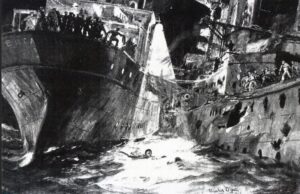 submarine warfare was Germany’s best hope for victory at sea. Despite the missed opportunities and heavy losses, the Battle of Jutland had left British naval superiority on the North Sea intact, but if they had been better prepared, they might have held a place of domination over the Germans then. When a nation decides to sit back and ride on its reputation, rather than continue a practice of a strong military force, that nation can find itself in a tough spot when the enemy attacks. The British could have had a very different outcome, but maybe better aim or the favor of God held the German High Seas Fleet at bay. They made no further attempts to break the Allied blockade or cross the Grand Fleet for the rest of World War I.
submarine warfare was Germany’s best hope for victory at sea. Despite the missed opportunities and heavy losses, the Battle of Jutland had left British naval superiority on the North Sea intact, but if they had been better prepared, they might have held a place of domination over the Germans then. When a nation decides to sit back and ride on its reputation, rather than continue a practice of a strong military force, that nation can find itself in a tough spot when the enemy attacks. The British could have had a very different outcome, but maybe better aim or the favor of God held the German High Seas Fleet at bay. They made no further attempts to break the Allied blockade or cross the Grand Fleet for the rest of World War I.

 My great grandnephew, Jaxx Harman is such a sweet boy. He is the youngest child and only son of my grandnephew Jake Harman, and his wife Melanie. Having two older sisters doesn’t bother Jaxx one bit, because he is well able to hold his own against the girls, Alice and Izabelle…should he ever need to. Nevertheless, Jaxx and his sisters are really good friends too. They might pick on him some, but he picks right back, so it’s really no big deal. Their household is really a rough and tumble world. The kids enjoy the teasing and are all really good sports about it all. The really fun thing about having kids who love to tease and are fie with being teased is that the house is always filled with laughter.
My great grandnephew, Jaxx Harman is such a sweet boy. He is the youngest child and only son of my grandnephew Jake Harman, and his wife Melanie. Having two older sisters doesn’t bother Jaxx one bit, because he is well able to hold his own against the girls, Alice and Izabelle…should he ever need to. Nevertheless, Jaxx and his sisters are really good friends too. They might pick on him some, but he picks right back, so it’s really no big deal. Their household is really a rough and tumble world. The kids enjoy the teasing and are all really good sports about it all. The really fun thing about having kids who love to tease and are fie with being teased is that the house is always filled with laughter.
For Jaxx, his daddy is his favorite and his best friend. Once Jake gets home from work, Jaxx is quite literally glued to him and just loves playing kingdom hearts with him. They spend lots of time doing things together, and if Jake is doing something, you can be sure that Jaxx is too, or will be just as soon as he is old enough to do so.
Jaxx is also very helpful to both his parents, and a very loving little boy. He just randomly gives hugs and kisses, and that just makes the day of the receiver. I love it when little boys don’t mind hugs for family members. Some boys are rather resistant to public displays of affection, so when you have one that loves hugging those he loves, it is a really special blessing in your life. Jaxx also loves to tell those he loves that he loves them. He instinctively knows that you really should let the people you love know that you love them. It makes their day, and that is important. Jaxx’s his true best friends are his mommy, daddy, and his two sisters.
Now, don’t assume that because Jaxx is very loving, and full of hugs and kisses, that he is in any way a wimp. 
 Jaxx is all boy, and he loves to wrestle and climb on everything from the furniture to any tree that he can get up in. I find it so hard to believe that Jaxx will be in Kindergarten in the Fall. Where have all the years gone? It seems like just yesterday that we were waiting for him to arrive, and now, he is growing up so much and so fast. I know that Jake and Melanie are both so proud of their son, like the rest of the family is too. Today is Jaxx 5th birthday!! Happy birthday Jaxx!! Have a great day!! We love you!!
Jaxx is all boy, and he loves to wrestle and climb on everything from the furniture to any tree that he can get up in. I find it so hard to believe that Jaxx will be in Kindergarten in the Fall. Where have all the years gone? It seems like just yesterday that we were waiting for him to arrive, and now, he is growing up so much and so fast. I know that Jake and Melanie are both so proud of their son, like the rest of the family is too. Today is Jaxx 5th birthday!! Happy birthday Jaxx!! Have a great day!! We love you!!

 My niece, Kellie Hadlock’s boyfriend, Tim Thompson is an amazing dad, and a wonderful boyfriend to Kellie. She tells me that he is definitely her “far more than I could ask, imagine, or think” blessing! They make such a great couple and family that it is so sweet to watch. It’s almost as if they have always been a family. Jolene loves Kellie as if she were her own mom, and Kellie loves Jolene the same as if she was her own child. Whenever you blend a family, even if one half of the couple doesn’t have kids yet, it is a big step, and they are all navigating the journey together in love. Tim has been so good to Kellie, and in my book that makes him a great guy. I have really never seen Kellie so happy…and that’s saying a lot, because Kellie is one of the happiest people I have ever met.
My niece, Kellie Hadlock’s boyfriend, Tim Thompson is an amazing dad, and a wonderful boyfriend to Kellie. She tells me that he is definitely her “far more than I could ask, imagine, or think” blessing! They make such a great couple and family that it is so sweet to watch. It’s almost as if they have always been a family. Jolene loves Kellie as if she were her own mom, and Kellie loves Jolene the same as if she was her own child. Whenever you blend a family, even if one half of the couple doesn’t have kids yet, it is a big step, and they are all navigating the journey together in love. Tim has been so good to Kellie, and in my book that makes him a great guy. I have really never seen Kellie so happy…and that’s saying a lot, because Kellie is one of the happiest people I have ever met.
Tim is an avid outdoorsman. He is really into shooting his bow right now and practicing for hunting season! Tim 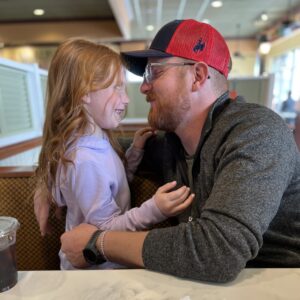 loves to go hunting, and he has even managed to get Kellie into hunting (something I never expected). He also loves hiking, camping, or even just hanging out in Casper or Shoshoni with his girls, Jo and Kellie. He is a hardworking man, and every time he has days off, he is doing something for the girls. He lives and works in Gillette, Jolene lives in Riverton, and Kellie in Casper, so that means a lot of driving to see his girls. Nevertheless, he does it happily, because they are the most important part of his life. One day soon, I hope they can all live in the same place, because it is hard to carry-on long-distance relationships, be it boyfriend/girlfriend or daddy/daughter. Kellie tells me that Tim makes her a better person, but I’d bet that Tim would say that Kellie makes him a better person. That is what makes them a great couple. Tim is aways doing things for the girls, and just being there for them every day. In Kellie’s words, “He shows up for us every day
loves to go hunting, and he has even managed to get Kellie into hunting (something I never expected). He also loves hiking, camping, or even just hanging out in Casper or Shoshoni with his girls, Jo and Kellie. He is a hardworking man, and every time he has days off, he is doing something for the girls. He lives and works in Gillette, Jolene lives in Riverton, and Kellie in Casper, so that means a lot of driving to see his girls. Nevertheless, he does it happily, because they are the most important part of his life. One day soon, I hope they can all live in the same place, because it is hard to carry-on long-distance relationships, be it boyfriend/girlfriend or daddy/daughter. Kellie tells me that Tim makes her a better person, but I’d bet that Tim would say that Kellie makes him a better person. That is what makes them a great couple. Tim is aways doing things for the girls, and just being there for them every day. In Kellie’s words, “He shows up for us every day 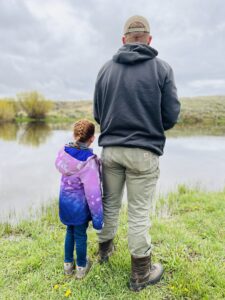
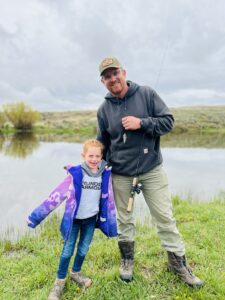 and I couldn’t have asked for a better man!” The very best part of a great relationship is being there for each other..
and I couldn’t have asked for a better man!” The very best part of a great relationship is being there for each other..
I really believe that Tim and Kellie are a match made in Heaven. Their Christian beliefs, and those of their families, are the same, and that puts them both on the same spiritual path. God knew the right person for each of them, and when that happens, it is a great match. I find that our family is very blessed with many matches made in Heaven, and I’m so happy that Tim and Kellie are another one of those. I know that life is going to bring them many wonderful blessings and wonderful adventures. Today is Tim’s birthday. Happy birthday Tim!! Have a great day!! We love you!!
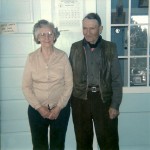
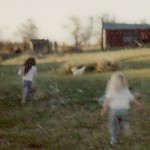 Bob’s step-grandfather, Walt Hein was quite a character. He always tried to seem gruff, and maybe he was in his younger days, but by the time I met him, and he became my official “Pitch” partner, I could tell that all that gruffness was just for show. After a year or so, he didn’t even continue on with the “show” of gruffness. He was an old softie, and he knew it. I first met Walt, as he was called, but I always called him Grandpa, in 1975, so he was 69 years old by that time, and pretty set in his ways, but I didn’t let that stop me from liking him right away. I never was a big card player, other than Cribbage with my Uncle Bill Spencer that is, but I would play “Pitch” with Grandpa. We were both ruthless players, and most people didn’t stand a chance against us.
Bob’s step-grandfather, Walt Hein was quite a character. He always tried to seem gruff, and maybe he was in his younger days, but by the time I met him, and he became my official “Pitch” partner, I could tell that all that gruffness was just for show. After a year or so, he didn’t even continue on with the “show” of gruffness. He was an old softie, and he knew it. I first met Walt, as he was called, but I always called him Grandpa, in 1975, so he was 69 years old by that time, and pretty set in his ways, but I didn’t let that stop me from liking him right away. I never was a big card player, other than Cribbage with my Uncle Bill Spencer that is, but I would play “Pitch” with Grandpa. We were both ruthless players, and most people didn’t stand a chance against us.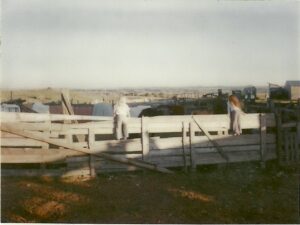
He was also a softie when it came to our girls, Corrie Petersen and Amy Royce. He let the chase the chicken on the ranch and took they for rides on the horses. They loved to do both, and they loved Grandpa. He had a “swimming pool” of sorts out in the yard, and he was always willing to fill up that old bathtub so the girls could cool off and have a little fun. Grandpa was an “old softie” when it came to my girls too, and all of his other grandchildren too.
Grandpa was famous for heading off to one of the outbuildings on the ranch for his afternoon nap. That usually lasted an hour or so, and then he was totally re-energized and ready to go play cards again. If Grandpa could have had his way, this would be the agenda for our visits there. He really hated it when we went into town to visit other relatives in town. He 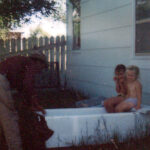
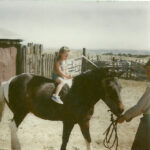 wanted to really maximize the card playing time. I felt bad when we needed to go. Not because I wanted to visit other family members, but because he almost seemed heartbroken. I knew that he didn’t get to play cards much when we weren’t there for a visit, so he really wanted to play all day, but Grandma had other things to do, so sometimes we just had to stop. Poor Grandpa. That ruined his whole day. Maybe that was why he took the naps. I miss those days. Today is the 115th anniversary of the birth of a sweet old man. Happy birthday in Heaven, Grandpa Hein. We love and miss you very much.
wanted to really maximize the card playing time. I felt bad when we needed to go. Not because I wanted to visit other family members, but because he almost seemed heartbroken. I knew that he didn’t get to play cards much when we weren’t there for a visit, so he really wanted to play all day, but Grandma had other things to do, so sometimes we just had to stop. Poor Grandpa. That ruined his whole day. Maybe that was why he took the naps. I miss those days. Today is the 115th anniversary of the birth of a sweet old man. Happy birthday in Heaven, Grandpa Hein. We love and miss you very much.

 My grandniece, Brooklyn Killinger, also known as Brookie, Brookie Lou, or Brooklyn Louise (coincidentally, my niece Lacey Stevens…Brooklyn’s “stepmom” has the same middle name, so Brooklyn Louise is a favorite for her). Brooklyn is a loving little girl, with a motherly way about her. She loves her baby girl doll named Navy. She takes Navy everywhere and she is very serious about her care. Nobody had better be mean to Navy or even accidentally do something that is remotely rough, because they will hear about it from Brooklyn. One time, Lacey grabbed Navy by the foot to move her, and Brooklyn immediately cried, “Don’t grab her by the foot!!” Well, of course, “Grandma Lacey” would never have intentionally been mean to little Navy. Lacey quickly said, “Whoops…sorry!!”
My grandniece, Brooklyn Killinger, also known as Brookie, Brookie Lou, or Brooklyn Louise (coincidentally, my niece Lacey Stevens…Brooklyn’s “stepmom” has the same middle name, so Brooklyn Louise is a favorite for her). Brooklyn is a loving little girl, with a motherly way about her. She loves her baby girl doll named Navy. She takes Navy everywhere and she is very serious about her care. Nobody had better be mean to Navy or even accidentally do something that is remotely rough, because they will hear about it from Brooklyn. One time, Lacey grabbed Navy by the foot to move her, and Brooklyn immediately cried, “Don’t grab her by the foot!!” Well, of course, “Grandma Lacey” would never have intentionally been mean to little Navy. Lacey quickly said, “Whoops…sorry!!”
Brooklyn is always thinking of her little family, and so for her birthday, she has asked for a car seat for Navy, 
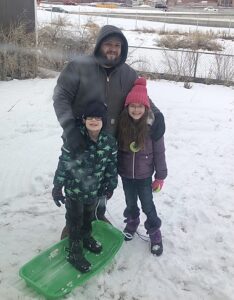 because her baby must be kept safe when she is riding in the car. She is also thinking of the future, so she has asked for a little brother doll for Navy and for herself, as the mommy, of course. She will undoubtedly make a wonderful mom someday, because she is practicing for that job now.
because her baby must be kept safe when she is riding in the car. She is also thinking of the future, so she has asked for a little brother doll for Navy and for herself, as the mommy, of course. She will undoubtedly make a wonderful mom someday, because she is practicing for that job now.
Brooklyn is always helpful and especially loves helping people with their needs. As Lacey and Brooklyn’s dad, Chris Killinger look to her future, they can picture her is the role of nurse or some such job that involves helping people. It’s amazing that some kids seem to always have a specific gift, and when the follow that career path, it just isn’t surprising, because it’s who they were their whole lives.
Brooklyn is big sister to her brother, Jaxon Killinger, and she loves him very much. It’s obvious to anyone who sees them, that they are good friends. Brooklyn is such a good big sister, and Jaxon looks up to her. He is about 
 two years younger than his sister, so to him, she knows everything, and she’s still cool…for a while anyway. As we all know, sibling relationships go through many stages, and while Brooklyn and Jaxon will always love each other, they may not always have that same “best friends” relationship. Nevertheless, I think they will manage to find their way back to being good friends again. Brooklyn and Jaxon are also friends with their little cousin Elliott. Unfortunately, Elliott lives in Sheridan, so they don’t get to see her often, but when they do, that all have a wonderful time. Recently they all got to go swimming with Lacey’s mom, Alena Stevens at the Casper Aquatics Center. They all had a blast…enjoying cousin time. Today is Brooklyn’s 9th birthday. Happy birthday Brooklyn!! Have a great day!! We love you!!
two years younger than his sister, so to him, she knows everything, and she’s still cool…for a while anyway. As we all know, sibling relationships go through many stages, and while Brooklyn and Jaxon will always love each other, they may not always have that same “best friends” relationship. Nevertheless, I think they will manage to find their way back to being good friends again. Brooklyn and Jaxon are also friends with their little cousin Elliott. Unfortunately, Elliott lives in Sheridan, so they don’t get to see her often, but when they do, that all have a wonderful time. Recently they all got to go swimming with Lacey’s mom, Alena Stevens at the Casper Aquatics Center. They all had a blast…enjoying cousin time. Today is Brooklyn’s 9th birthday. Happy birthday Brooklyn!! Have a great day!! We love you!!
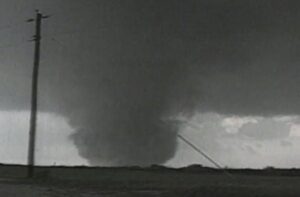
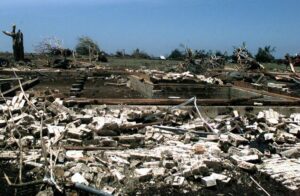 Tornadoes can happen anywhere, but there are areas of the country that are more prone to tornadoes. Nevertheless, the F-5 tornado is extremely rare, and thankfully so, but when one hits a town, it is…devastating!! On May 27, 1997, an F-5 tornado his Jarrell, Texas, killing 27 people and destroying dozens of homes. That damage and loss of life was horrific, but it was what happened afterward that was truly amazing.
Tornadoes can happen anywhere, but there are areas of the country that are more prone to tornadoes. Nevertheless, the F-5 tornado is extremely rare, and thankfully so, but when one hits a town, it is…devastating!! On May 27, 1997, an F-5 tornado his Jarrell, Texas, killing 27 people and destroying dozens of homes. That damage and loss of life was horrific, but it was what happened afterward that was truly amazing.
Once the news of the devastating tornado broke, people from near and far started showing up to do whatever it took to help out. In fact, people showed up by the busloads. The people were there to help with the cleanup, but that wasn’t really all they were there for. Upon arrival, they found that there was a great need for blood, because many who were critically injured needed blood and without a second thought, they showed up at blood banks and hospitals, ready to donate the critical blood that was needed. Besides giving blood, volunteers helped pick up debris and rubble. The work was hard, but those who arrived in Jarrell wanted to show their support to the residents of the devastated town.
The town of Jarrell, population around 400 at the time of the tornado lost entire families, like the Igo family of five, the Moehring family of four, the Smith family of three, and the Gower family of 2. but since the tornado, the town has really been growing. These days, Jarrell has more than 1750 people in residence. Really, that goes to show that these people were not going to give up. They were going to rebuild their lives and their town. Twenty-five years can make a huge difference in a town’s history. People can forget what happened so long ago, but if the survivors never forget, they can pass the history of the tragedy on to the future generations.
I’m sure that over the years, there were those who couldn’t bear to stay there any longer. That happens too. Not everyone is able to move on from the past, and sometimes people just don’t want to stay where there has been so much loss. There is really no right or wrong thing to do, it is simply what the people who went through 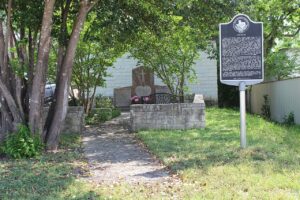
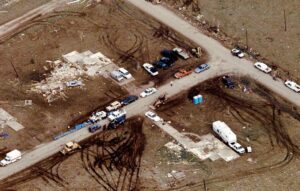 the tragedy need to do in order to heal. As for the town, it has been rebuilt and it is growing all the time. I think that Jarrell will thrive again, and maybe even become a larger city in time. The fact that the town has the ability to heal and move on is due in large part to the help of the amazing people came to the rescue 25 years ago in Jarrell’s hour of need.
the tragedy need to do in order to heal. As for the town, it has been rebuilt and it is growing all the time. I think that Jarrell will thrive again, and maybe even become a larger city in time. The fact that the town has the ability to heal and move on is due in large part to the help of the amazing people came to the rescue 25 years ago in Jarrell’s hour of need.
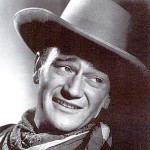
 Most people, these days, have probably never heard of Marion Robert Morrison, although I’ll bet that most people have seen at least one of his movies, or at the very least a commercial advertising one of his movies on some of the old movie channels. Maybe if I said that his name was John Wayne or even The Duke (his famous nickname), more people would recognize the famous American West actor. John Wayne actually became the epitome of the American West. Wayne was born on May 26, 1907, at 224 South Second Street in Winterset, Iowa, to Clyde Leonard Morrison (1884–1937), who was the son of American Civil War veteran Marion Mitchell Morrison (1845–1915), and the former Mary “Molly” Alberta Brown (1885–1970), who was from Lancaster County, Nebraska. He weighed a whopping 13 pounds at birth. Wayne claimed his middle name was soon changed from Robert to Michael when his parents decided to name their next son Robert. That fact, if it is a fact, cannot be confirmed even with extensive research, because no such legal change was found. Wayne’s legal name remained Marion Robert Morrison his entire life, but he often went by Marion Michael Morrison…before becoming John Wayne.
Most people, these days, have probably never heard of Marion Robert Morrison, although I’ll bet that most people have seen at least one of his movies, or at the very least a commercial advertising one of his movies on some of the old movie channels. Maybe if I said that his name was John Wayne or even The Duke (his famous nickname), more people would recognize the famous American West actor. John Wayne actually became the epitome of the American West. Wayne was born on May 26, 1907, at 224 South Second Street in Winterset, Iowa, to Clyde Leonard Morrison (1884–1937), who was the son of American Civil War veteran Marion Mitchell Morrison (1845–1915), and the former Mary “Molly” Alberta Brown (1885–1970), who was from Lancaster County, Nebraska. He weighed a whopping 13 pounds at birth. Wayne claimed his middle name was soon changed from Robert to Michael when his parents decided to name their next son Robert. That fact, if it is a fact, cannot be confirmed even with extensive research, because no such legal change was found. Wayne’s legal name remained Marion Robert Morrison his entire life, but he often went by Marion Michael Morrison…before becoming John Wayne.
When he was six years old, Wayne’s family moved to Glendale, California, where he like many teens in those days, had a paper route that got him up at four in the morning to deliver newspapers. After school, he played football and made deliveries for local stores. After high school, he had big ambitions to attend the U.S. Naval Academy, but his dreams were dashed when they rejected him. Then, he accepted a full scholarship to play football at the University of Southern California in Los Angeles, which is quite likely the very thing that led to his entire future, and not in football or academics.
For most football players, having a job isn’t an easy feat, because of the football and study schedules, so in the summer of 1926, Wayne’s football coach found him a job as an assistant prop man on the set of a movie directed by John Ford. Ford saw something more is the handsome young football player, and he started to use Wayne as an extra in his films. It’s strange, maybe, that I think that John Wayne became more handsome as he got older. The younger verson, while handsome, lacked the character that really defines some men. That led to larger roles, and in 1930, Ford recommended John Wayne for Fox’s epic Western, “The Big Trail.” Wayne won the part, but the movie did poorly, and Fox let his contract lapse. That didn’t deter John Wayne, who had by then been bitten by the acting bug. Over the next decade, he worked tirelessly on a number of low-budget films, to improve his acting abilities, and in the end, his old friend and mentor, John Ford gave him his big break, when he cast him in the 1939 western, “Stagecoach.” The rest is history, as John Wayne starred in more than 77 movies. Including my favorites, “Maclintock,” “True Grit,” “The Sons of Katie Elder,” and “Hell Fighters.” While John Wayne got his start in Westerns, he also did a number of military movies. It wasn’t hard to transition from a valiant cowboy or cavalry soldier to the brave WWII fighters of films like Sands of Iwo Jima (1949) and Flying Leathernecks (1951). John Wayne was deeply conservative in his politics, and he used his 1968 film, The Green Berets, to express his support of the American government’s war in Vietnam.
Unfortunately, by the late 1960s, some Americans had tired of Wayne and his simplistically masculine and patriotic characters. I simply cannot understand that at all, except that people had started to look for the increasingly sinister in movies. Sadly, western movies began rejecting the simple black-and-white moral codes championed by Wayne and replacing them with a more complex and tragic view of the American West…not a good move for the people. Nevertheless, John Wayne proved more adaptable than many expected. True Grit 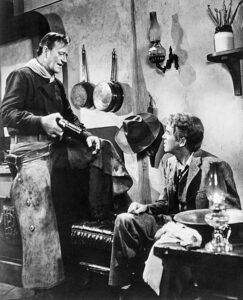
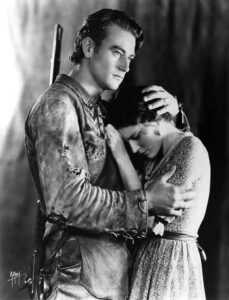 (1969) allowed him to escape the narrow confines of his own good-guy image, but still remain basically “the good guy” in reality. Nevertheless, John Wayne was entering the final years of his life, whether he knew it or not. His final film, The Shootist (1976), proved once and for all that he was an actor who had earned the right to be called elite, when he won over even his most severe critics. At the time of the filming of “The Shootist,” John Wayne was battling lung cancer, while playing the part of a dying gunfighter whose moral codes and principles no longer fit in a changing world. Three years later, Wayne died of cancer. To this day, public polls identify him as one of the most popular actors of all time.
(1969) allowed him to escape the narrow confines of his own good-guy image, but still remain basically “the good guy” in reality. Nevertheless, John Wayne was entering the final years of his life, whether he knew it or not. His final film, The Shootist (1976), proved once and for all that he was an actor who had earned the right to be called elite, when he won over even his most severe critics. At the time of the filming of “The Shootist,” John Wayne was battling lung cancer, while playing the part of a dying gunfighter whose moral codes and principles no longer fit in a changing world. Three years later, Wayne died of cancer. To this day, public polls identify him as one of the most popular actors of all time.

 My niece, Cassie Franklin is starting a wonderful life, after coming out of a bad marriage. She has two beautiful children, and now she has found a partner, William Burr, with whom she is very happy. Life has not always been easy for Cassie, especially with the loss of her mom, Rachel Schulenberg coming up on 2 years ago now, the extra work of raising a child with Down Syndrome, complicated with the ex-husband and all of his issues, Cassie had her hands very full. Enter William Burr. These days, I see a whole new Cassie. She is happy, relaxed, and while her plate is still very busy with her children, Lucas and Zoey, she is not alone in this journey anymore.
My niece, Cassie Franklin is starting a wonderful life, after coming out of a bad marriage. She has two beautiful children, and now she has found a partner, William Burr, with whom she is very happy. Life has not always been easy for Cassie, especially with the loss of her mom, Rachel Schulenberg coming up on 2 years ago now, the extra work of raising a child with Down Syndrome, complicated with the ex-husband and all of his issues, Cassie had her hands very full. Enter William Burr. These days, I see a whole new Cassie. She is happy, relaxed, and while her plate is still very busy with her children, Lucas and Zoey, she is not alone in this journey anymore.
Cassie is a woman of many talents in her own right. She is a great photographer and owner of Iverson Photos,  and I have very much enjoyed viewing her work over the years. Cassie has been a member of our family since her late mom married my brother-in-law, Ron Schulenberg on June 12, 2010. She posts all kinds of photographs, but my favorites are the landscapes. I love the outdoors, and so naturally, the pictures of the outdoors are of the most interest to me. I also love the pictures of her children. When you live a little way away from the little ones, it’s always nice to get to watch them grow up, even if it is in pictures.
and I have very much enjoyed viewing her work over the years. Cassie has been a member of our family since her late mom married my brother-in-law, Ron Schulenberg on June 12, 2010. She posts all kinds of photographs, but my favorites are the landscapes. I love the outdoors, and so naturally, the pictures of the outdoors are of the most interest to me. I also love the pictures of her children. When you live a little way away from the little ones, it’s always nice to get to watch them grow up, even if it is in pictures.
Cassie has a second business called Nature and Sun Natural Products. Cassie is all about healthy natural products, including candles, body products, and foods. She is very resourceful, and very devoted to a healthy lifestyle for herself and her children. She is a naturalist in every way. She doesn’t want the vaccinations…for herself or her children. She is careful about what they eat, a habit that most likely started with all of the health issues that Lucas has had. 
 Lucas is a healthy boy because of the fight his mom has waged to make sure he stays that way. While Zoey doesn’t have the same health issues, Cassie is unwilling to take any chances with her health either. I think that sometimes having a health scare with your child, necessarily makes you as much a health expert as any doctor, and that is what Cassie strives to become. Her children are very blessed to have her for their mom. Today is Cassie’s birthday. Happy birthday Cassie!! Have a great day!! We love you!!
Lucas is a healthy boy because of the fight his mom has waged to make sure he stays that way. While Zoey doesn’t have the same health issues, Cassie is unwilling to take any chances with her health either. I think that sometimes having a health scare with your child, necessarily makes you as much a health expert as any doctor, and that is what Cassie strives to become. Her children are very blessed to have her for their mom. Today is Cassie’s birthday. Happy birthday Cassie!! Have a great day!! We love you!!
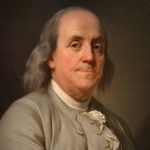
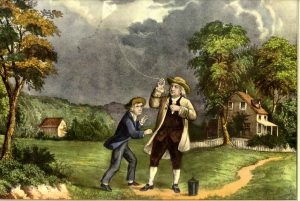 Firefighter and Benjamin Franklin…not usually thought of in the same sentence, but really, they should be. In 1736, Benjamin Franklin was already a young man of influence, but his ambitions didn’t stop at just a few. Most of us think of Benjamin Franklin as a scientist, inventor, founding father, prankster, and writer, but firefighter…hmmmmm, not so much. Nevertheless, Benjamin Franklin was a visionary. He saw a problem and decided to fix it.
Firefighter and Benjamin Franklin…not usually thought of in the same sentence, but really, they should be. In 1736, Benjamin Franklin was already a young man of influence, but his ambitions didn’t stop at just a few. Most of us think of Benjamin Franklin as a scientist, inventor, founding father, prankster, and writer, but firefighter…hmmmmm, not so much. Nevertheless, Benjamin Franklin was a visionary. He saw a problem and decided to fix it.
By 1736 Franklin had adopted Philadelphia, Pennsylvania as his home, but during a visit to his hometown of Boston, Massachusetts, he witnessed a fire, and his mind went into overdrive. What he saw was that the safety precautions to keep fire from spreading seemed to be far more advanced in Boston than in Philadelphia. At that time, Philadelphia’s infrastructure was basically a maze of wooden buildings and houses squeezed together in such a way that it was almost like kindling for a bonfire. Franklin saw this decided that something needed to be done. So, he published his findings in his own Philadelphia Gazette. In doing so, he turned up a different kind of heat. Before long, he was able to round up about 30 of his friends and fellow business owners who were interested. So together, the founded the Union Fire Company. Franklin made sure that The Union Fire Company was a non-profit organization…run completely by volunteers. What made this attractive to these business owners is that it was essentially a promise, to always have each other’s backs, if a fire broke out on or close to one of their properties. Not only were they promising to help extinguish the flames and save homes, but each member was required to keep a heavy-duty bag in which to smuggle out any possessions they could salvage as well. It was a code of honor to try, in the midst of disaster, to salvage whatever they could of the lives of the occupants. The Union Fire Company quickly became the biggest fire relief company in the Colonies, or as they later became, the United States.
Never being one to just sit back and tell others what to do, Benjamin Franklin became a volunteer firefighter himself. Soon, there were six volunteer corps established in Philadelphia. This fire company was the first volunteer fire company of its kind in the United States. When people saw how well the system worked, volunteer fire companies sprung up across the city and soon all over the country. We think of Benjamin Franklin 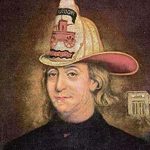
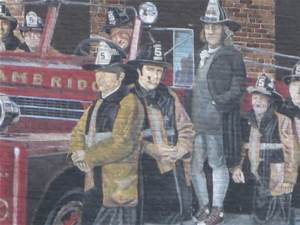 as many things, but in reality, we should maybe think of him as much more than we do. He was the brainchild behind the Great Compromise, which created the Congress we still have today. He was also the first fireman in another way. He “put out the fiery debates” and created a sense of compromise and peace among the founding fathers of our nation too, but he was an actual firefighter in that he actually fought the fires in his city.
as many things, but in reality, we should maybe think of him as much more than we do. He was the brainchild behind the Great Compromise, which created the Congress we still have today. He was also the first fireman in another way. He “put out the fiery debates” and created a sense of compromise and peace among the founding fathers of our nation too, but he was an actual firefighter in that he actually fought the fires in his city.
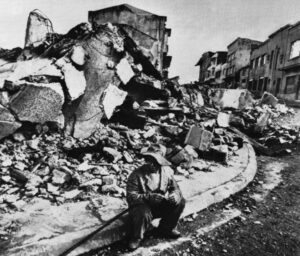
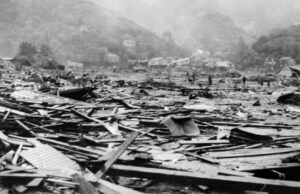 I would never have considered that an earthquake in Chili could affect Hawaii, which is 6,593 miles away, but on May 23, 1960, that seemingly huge distance suddenly became very small. When a 9.5 magnitude earthquake hit Chili on May 22, 1960, thousands of people lost their lives, and a giant tsunami was triggered. By the next day, that tsunami had traveled across the Pacific Ocean and killed an additional 61 people in Hilo, Hawaii. That distance and the amount of devastation seems incredible to me.
I would never have considered that an earthquake in Chili could affect Hawaii, which is 6,593 miles away, but on May 23, 1960, that seemingly huge distance suddenly became very small. When a 9.5 magnitude earthquake hit Chili on May 22, 1960, thousands of people lost their lives, and a giant tsunami was triggered. By the next day, that tsunami had traveled across the Pacific Ocean and killed an additional 61 people in Hilo, Hawaii. That distance and the amount of devastation seems incredible to me.
The earthquake, which involved a severe plate shift, caused a large displacement of water just off the coast of southern Chile at 3:11pm. The resulting wave, traveling at speeds in excess of 400 miles per hour, moved west and north. The damage to the west coast of the United States was estimated at $1 million, but there were no deaths there.
In 1948, the Pacific Tsunami Warning System was established in response to another deadly tsunami. It worked properly and warnings were issued to Hawaiians six hours before the deadly wave was expected to arrive. Unfortunately, some people ignored the warnings, as always seems to happen. Some other people actually headed to the coast in order to view the wave…like the warning was actually an announcement of a coming attraction. The tsunami arrived only a minute after it was predicted, and it absolutely destroyed Hilo Bay on the island of Hawaii.
People really don’t fully understand just how much destructive power water has, until they see it in action. When the waves hit Hilo Bay, they were thirty-five-feet high. They were so strong that they bent parking meters to the ground and wiped away most of the buildings. When the wave hit a 10-ton tractor, it was swept out to sea like it was made of Styrofoam. you would think that boulders would be sturdy enough to hold back the waves, but the 20-ton boulders that made up the seawall were easily moved 500 feet. The 61 people who lost their lives were in Hilo…the hardest hit area of the island chain.
With all of that destruction, you might be inclined to think that the waves would have lost power, and to a degree, I suppose they did. Nevertheless, the tsunami continued to race further west across the Pacific. Even given a ten-thousand-mile distance from the earthquake’s epicenter, Japan still wasn’t able to provide enough warning time to get the people out of harm’s way. The wave hit Japan at about 6:00pm, more than a full day after the earthquake. The tsunami struck the Japanese islands of Honshu and Hokkaido. The wave’s power was still enough to crushing 180 people, and to leave 50,000 more homeless. In Japan, it caused $400 million in 
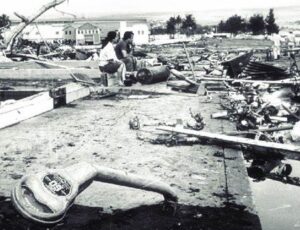 damages. With everything destroyed by this one earthquake and the subsequent tsunami, you would think that people would finally learn to stay away from the shore during a tsunami warning, but every year people lose their lives because they decided to cross paths with waves…be it from tsunamis, hurricanes, and other floods. Water is a force to be reckoned with. It should be considered very dangerous.
damages. With everything destroyed by this one earthquake and the subsequent tsunami, you would think that people would finally learn to stay away from the shore during a tsunami warning, but every year people lose their lives because they decided to cross paths with waves…be it from tsunamis, hurricanes, and other floods. Water is a force to be reckoned with. It should be considered very dangerous.

